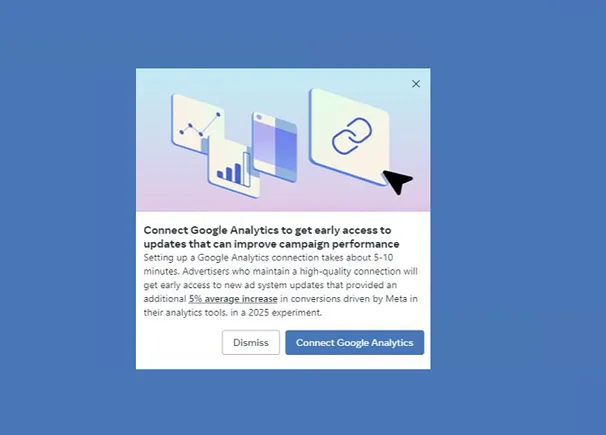As artificial intelligence technologies rapidly advance, marketing teams are tasked with integrating these powerful tools into their existing operations. However, this transition can be daunting, especially if your MOps function was established before the rapid rise of AI.
In this first article of our four-part series, we’ll outline the fundamental steps for incorporating AI into MOps, paving the way for the subsequent articles to delve deeper into planning AI integration with people, process, data and platforms.
Define your goals and priorities
Before integrating AI into your MOps, you must clearly define your objectives. This sets the course for your entire AI-driven strategy. As a marketing leader or CMO, you’re looking to harness AI to generate tangible business outcomes and elevate customer experiences.
Your goals should be measurable and directly tied to your company’s key business objectives. This alignment enables you to effectively track progress and evaluate the success of your AI initiatives. As you craft these objectives, consider the following points:
- Marketing efficiency. How will AI streamline your operations? Envision AI optimizing campaign analysis or automating routine tasks, thereby freeing your team to focus on more strategic work.
- Personalization. In what ways can AI enhance personalization efforts? AI can tailor customer interactions, leading to deeper engagement and loyalty.
- Customer insights. How will you leverage AI to better understand your audience? AI’s predictive analytics can unlock nuanced consumer behavior patterns, allowing for more targeted marketing efforts.
- ROI measurement. Determine your benchmarks for ROI. AI can refine attribution models, making it simpler to connect marketing spend with outcomes.
- Sales and marketing alignment. Consider how AI will foster collaboration between sales and marketing — a critical factor in closing the loop from lead generation to conversion.
Remember, the success of integrating AI into MOps isn’t merely about leveraging the most advanced technology. Success hinges on how well this technology can be aligned with your key business objectives to drive results, improve efficiency and create a sustainable competitive advantage in the digital age.
Dig deeper: The 5 key pillars of AIOps in marketing
Assessing your current marketing technology stack
The martech landscape is perpetually evolving, and the rise of AI tools and approaches has only accelerated this evolution. Scrutinize your current martech infrastructure with a discerning eye. Consider the following:
- Comprehensive audit. Begin with systematically auditing your martech tools and processes. This requires a deep-dive analysis to unearth areas where AI can amplify efficiencies. Your goal is to:
- Identify overlaps where tools may be duplicating efforts, draining resources instead of saving them.
- Uncover gaps where opportunities for AI integration exist — places where automation can streamline workflows or analytics can glean unprecedented insights.
- Adding value without complexity. The insertion of AI into your marketing operations needs to be a strategic fit rather than a case of jumping on the bandwagon without a clearer plan. Consider the following:
- How can AI elevate your marketing technology’s performance, facilitating more personalized customer experiences or accurate data analytics?
- Assess whether AI solutions can empower your existing platforms to deliver better customer engagement and a higher ROI.
- Avoiding redundancy. Analyze each tool for its utility and potential for enhancement:
- Does the proposed AI solution offer unique capabilities, or does it merely replicate what’s already in place? Redundancy equals wasted expenditure.
- Focus on simplifying and decluttering the tech stack, ensuring each component serves a distinct purpose within the AI-augmented ecosystem.
- Mapping the transformation journey. Craft a roadmap for digital transformation with AI as a cornerstone. This should be laser-focused on:
- Sustainable implementation practices that foster long-term growth and adaptability.
- Building a resilient infrastructure capable of evolving with market dynamics and customer expectations.
By evaluating your marketing technology setup and orchestrating the role AI will play, you ensure it enhances, not complicates, your marketing ecosystem.
The outcome of this is a more future-ready martech strategy that aligns with your overarching business goals and paves the way for a smart and sustainable digital transformation.
Dig deeper: Aligning martech with your business strategy: Your blueprint for success
Building a skilled team for AI adoption
To orchestrate a successful AI implementation within your marketing framework, assembling a team with a multifaceted understanding of AI is imperative — encompassing its extensive possibilities and recognizing its boundaries. When thinking about creating an ideal team, in addition to current members, consider the following:
- Citizen data scientists. Individuals adept in handling and interpreting massive data sets, capable of providing actionable insights that are both meaningful and measurable, though they may not always sit on a marketing team, though “citizen data scientists,” or marketers with ready access to low-code or no-code platforms to get key insights through streamlined interfaces may be the right fit here.
- AI-trained marketers. Don’t overlook the idea of upskilling your current marketing team to be more AI savvy. While prompt engineers are making headlines as a novel job title, the future will be filled with marketers for whom using generative AI and other tools is a requisite skill.
Creating a strategic roadmap for AI integration
Of course, not all of this can happen overnight. Creating a plan with incremental improvements and measurable outcomes will help your marketing operations more smoothly adopt AI without disrupting work in progress. Consider the following:
- Define your aims with precision. Begin by pinpointing your core objectives. Whether they involve boosting engagement, personalizing consumer interactions, or augmenting data analytics, setting clear, measurable goals is the cornerstone that will guide your AI integration roadmap.
- Assess your current digital ecosystem. Conduct a comprehensive review of your existing setup — CRM systems, content management platforms and data analytics processes. Understanding this framework will reveal the most beneficial integration points for AI technologies.
- Develop a phase-by-phase AI implementation plan. Prioritize the marketing areas that promise the highest return on investment (ROI) and customer satisfaction elevation. Your phased roadmap should include immediate wins, short-term goals and a long-term strategy.
- Realistic milestone setting. Commit to tangible, achievable milestones, ensuring each step offers value and advances you toward your larger strategic goals. Align these milestones with business cycles and peak customer interaction periods to maximize impact.
- Calculated risk management. Incorporate contingencies for data security, privacy and compliance considerations. AI’s power comes with responsibility — protect customer data while leveraging insights for marketing success.
- Continuous learning and adaptation. Adopt a test-and-learn approach to iterate and improve your AI applications. Digital marketing is dynamic — your AI initiatives should be, too.
AI has great potential to transform our marketing operations and how we deliver marketing content, campaigns and initiatives to our customers. As we wrap up this initial article in this series, I hope you have some ideas of how to realistically begin (or continue) integration of this important technology into the way you perform marketing work.
In the coming installments of this series, we will explore the nuances of integrating AI with your teams, processes, data analysis and appropriate platforms to select and establish a cohesive strategy for AI adoption in MOps.
Dig deeper: 3 ways MOps can bridge the gap in marketing analytics
The post Laying the groundwork for AI in MOps: How to get started appeared first on MarTech.








































































